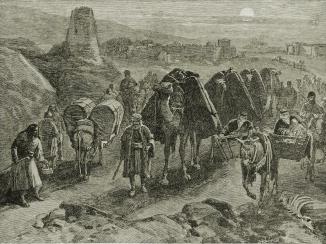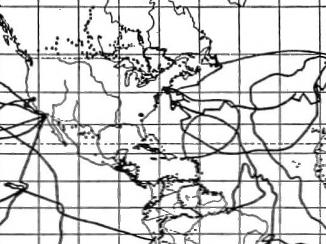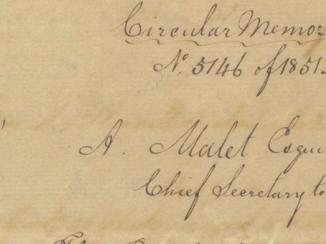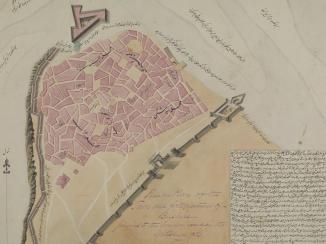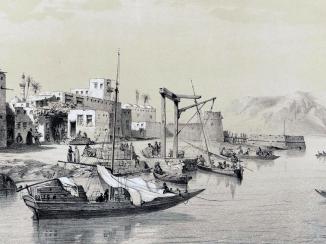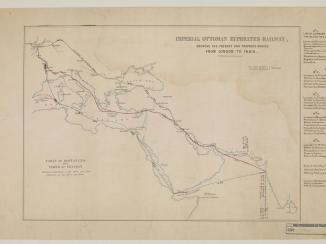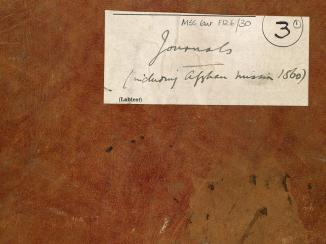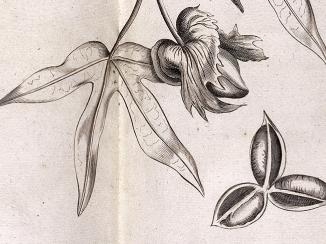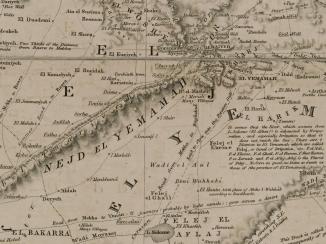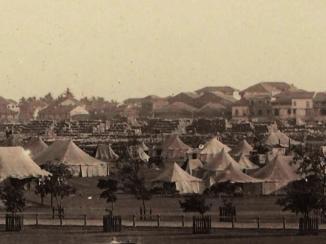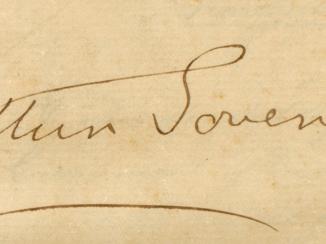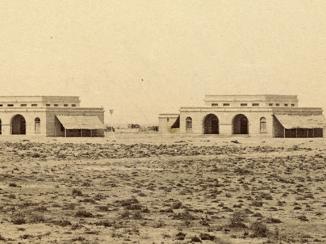Overview
In February 1866, Sayyid Thuwaynī bin Sa‘īd Āl Bū Sa‘īd, Sultan of Muscat, and his eldest son Sālim were marching with their army towards Al-Buraymī, a Wahhabi stronghold on the Najd/Oman border with the intention of taking control of the town and dealing a significant blow to the Wahhabi in their ongoing dispute with them.
The army never made it to Al-Buraymī, however. Having made camp a few days march from the town, they awoke to the news that their Sultan had died in the night. According to his son Sālim, the Sultan had succumbed to a virulent fever and had been buried immediately to prevent the illness from spreading.
The servants of the Sultan, however, told a different story, alleging that Sālim had entered his father’s room in the night and shot and killed him, burying the body and concocting the fever story to disguise the truth. Sālim apparently wanted to seize power from his father and to prevent a war with the Wahhabi, who he was on more favourable terms with than his father.
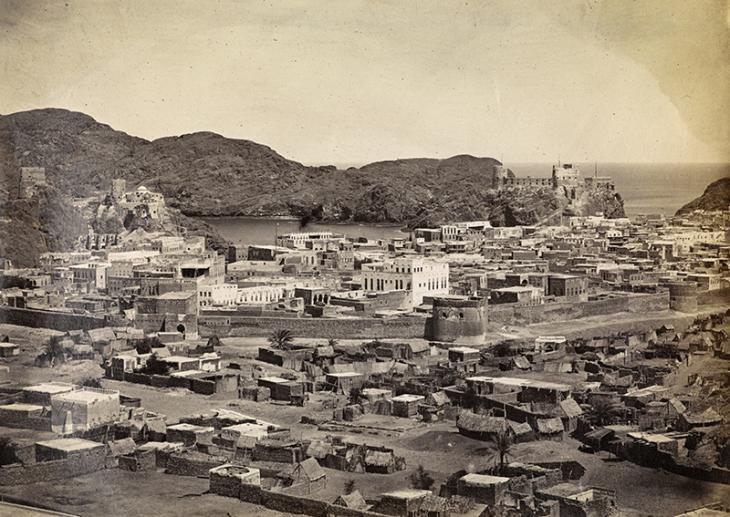
Dispute between Wahhabi and the Sultan
The dispute between the Wahhabi and the Sultan at Muscat had been ongoing for several years. But in 1865, both sides had agreed to permit Lieutenant-Colonel Lewis Pelly, Political Resident A senior ranking political representative (equivalent to a Consul General) from the diplomatic corps of the Government of India or one of its subordinate provincial governments, in charge of a Political Residency. in the Persian Gulf The historical term used to describe the body of water between the Arabian Peninsula and Iran. , to attempt to mediate a settlement between them.
These mediation talks had initially been constructive and began with a discussion about a potential settlement to the dispute. When a Wahhabi Lieutenant launched an attack on several Omani coastal towns the talks came to an end and the Sultan had decided to raise his army and march on Al-Buraymī, where the rogue Lieutenant was based. The Government of India assisted the Sultan by providing money and weapons for the counterattack.
Rivalry over Rulership
Following his father’s death, Sālim’s decision to name himself Sultan was not popular in Muscat or with the Omani tribes of the surrounding towns and regions, who traditionally paid a tribute and swore allegiance to the Sultan of Muscat. So unhappy were they that they refused to pay tribute to Sālim.
Sālim’s rulership was also under threat from his uncle Turki bin Sa‘īd Āl Bū Sa‘īd, who Sālim had ordered to be thrown overboard in the Gulf in 1866. Turki bin Sa‘īd had been rescued by the British Residency An office of the East India Company and, later, of the British Raj, established in the provinces and regions considered part of, or under the influence of, British India. Steamer, carrying Lewis Pelly, which happened to be passing in the area and witnessed the murder attempt. Upon rescuing Turki bin Sa‘īd, Lewis Pelly offered him protection and shelter as a guest of the Political Residency An office of the East India Company and, later, of the British Raj, established in the provinces and regions considered part of, or under the influence of, British India. in Bushire.
This uneasy situation continued for nearly two years. Sālim unsuccessfully attempted to consolidate his power but the British Government initially refused to recognise him as ruler, because of the rumours surrounding his father’s death. They eventually recognised him as Sultan in September 1866, but his uncle continued to attempt to raise support and money to launch attacks on Muscat and name himself as Sultan.

Turki bin Sa‘īd Āl Bū Sa‘īd’s Attack on Muscat
In September 1866, Turki bin Sa‘īd managed to secure sufficient support to launch a sea attack on Muscat, landing late one evening and successfully taking one of the forts at the entrance to Muscat harbour.
From there, Turki began to use the fort’s defences to bombard his nephew’s home. In response, his nephew ordered that a defensive wall be constructed around the fort with the intention of blockading the attackers in and eventually starving them out. Unfortunately the defensive wall was constructed using heavy sacks containing rice and dates, and Turki’s followers simply waited until nightfall and helped themselves to the supplies in the sacks, ensuring they had a ready food supply while continuing to erode the blockade intended to keep them in. Nevertheless, Turki’s attempt to overthrow his nephew was ultimately unsuccessful and he was obliged to again seek refuge away from Muscat.
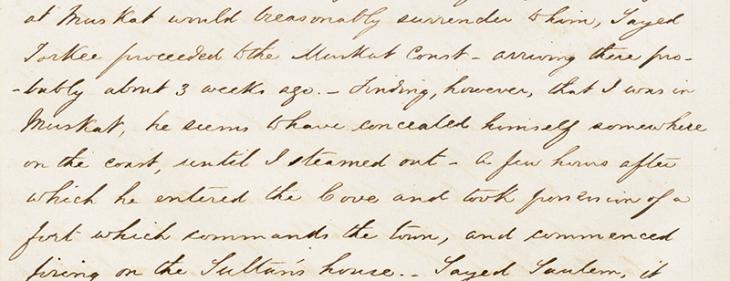
A New Sultan
He continued however to attempt to overthrow Sālim throughout 1867 and 1868. Sālim eventually surrendered to his uncle and Turki bin Sa‘īd was named the new Sultan of Muscat in October 1868. Meanwhile, Sālim was exiled from Oman and spent his later years in Bombay, where he died in 1876.






